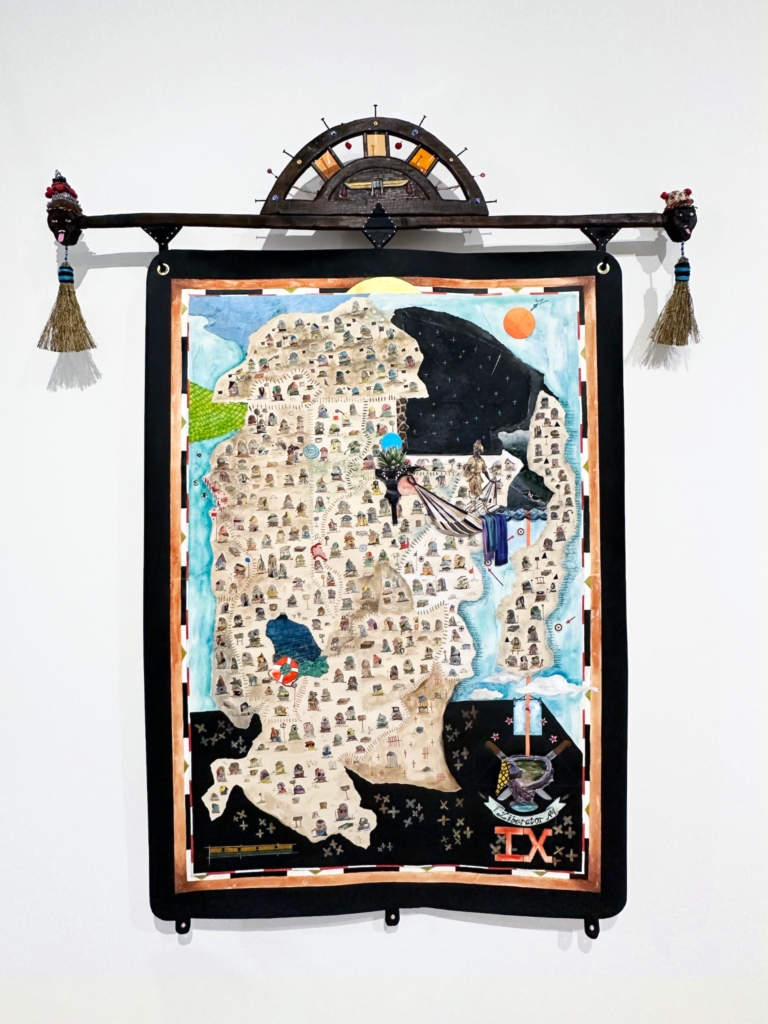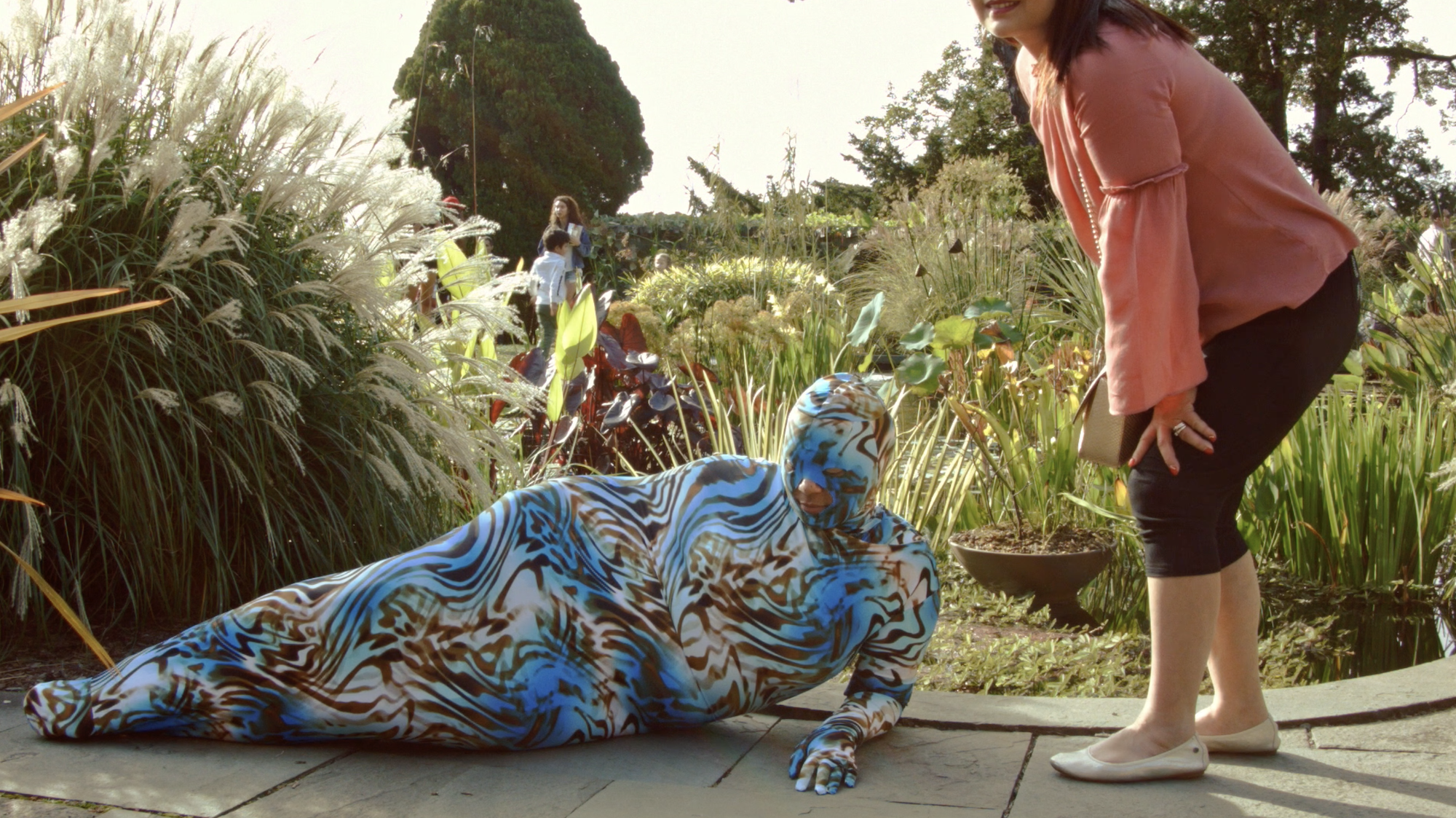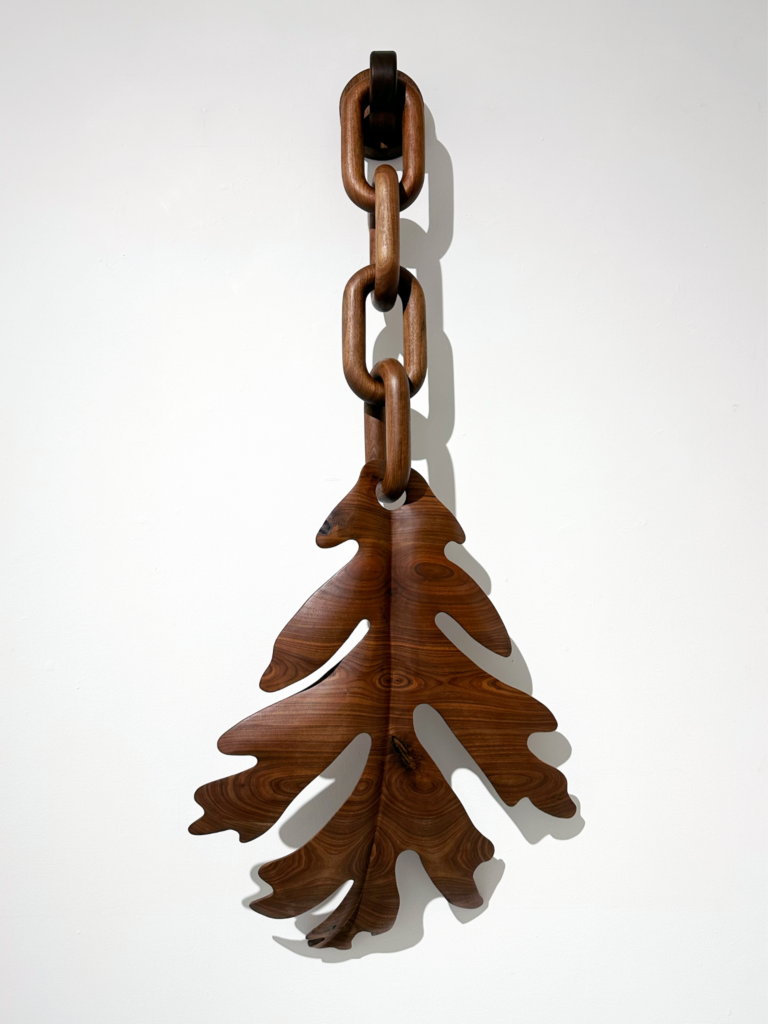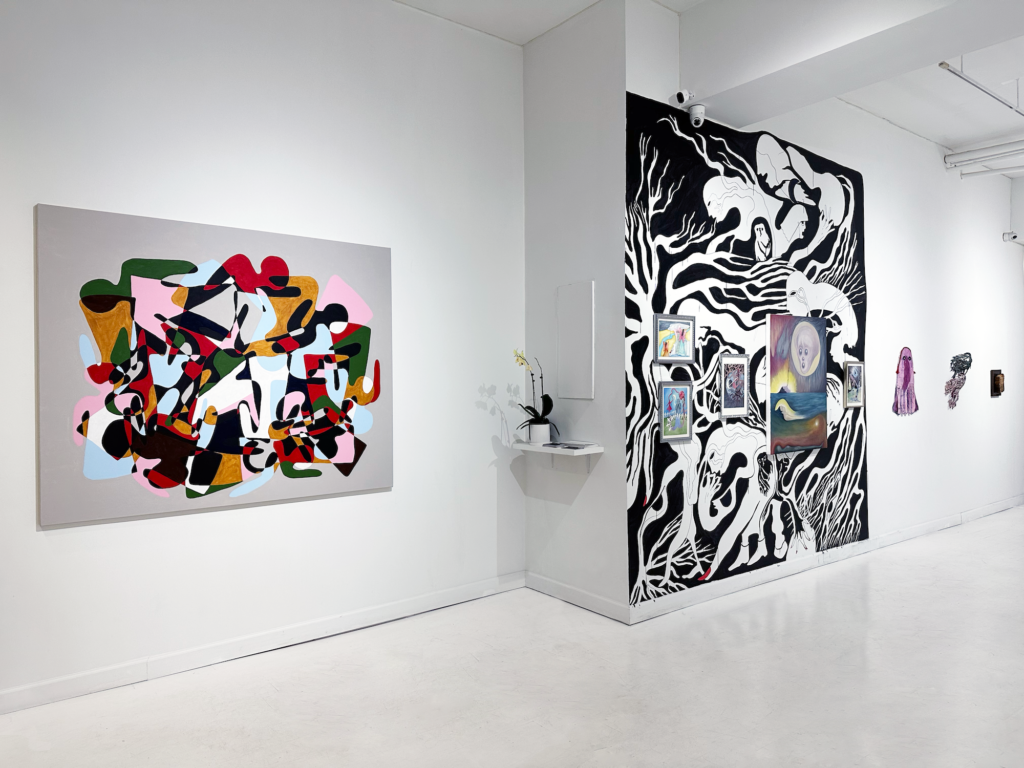Magic and Optimism Closes The Immigrant Artist Biennial 2023


“Excavated Selves, Becoming Magic Bodies” is a show of great visual tenacity and fantastical vitality. Walking into the gallery space was like stumbling into Hayao Miyazaki’s world. A large majority of the works deploy a language of biomorphism informed by the fecundity of the natural world, while others remain simple and abstract, allowing the “magic” of bodies to manifest through their (meta)physical presence. As the concluding exhibition of The Immigrant Artist Biennial 2023: Contact Zone, “Excavated Selves” also explores lingering issues related to migration and heritage in continuation of the biennial’s central themes; featured artists are AYDO (A young Yu and Nicholas Oh), Selva Aparicio, Felipe Baeza, Ala Dehghan, Dominique Duroseau, Mia Enell, Maya Hayuk, Raul De Lara, Joiri Minaya, Lilian Shtereva, Tariku Shiferaw, Francesco Simeti, and Nyugen E. Smith.

The human body is the starting point of this exhibition. Since the late 1970s, scholars such as Margaret Lock have postulated embodiment theory in anthropology as a countercurrent to the legacies of Cartesian dualism. Pushing back against mind-body separation, embodiment theory encourages scholarly interest in the history and condition of the body as a site of change, response, and potentiality. In this show, the human body emerges as unfamiliar and strange, because to make human forms alien means to highlight the conditions and tensions that make impossible a normative body.

In Joiri Minaya’s performance video titled “Containers,” the artist’s experience as a woman of color is echoed by the use and removal of a textile body-suit printed in botanical camouflage. On one hand, camouflage carries the connotation of protection, or fitting in. On the other hand, it exacerbates her status as the stereotypical “other” and subjects her to an exoticizing, patriarchal gaze. Her foreign body is in a constant state of negotiation with societal biases and expectations. Across from the room, a group of psychologically perturbing paintings by Ala Dehghan is placed against a wall of similarly nightmarish figurations. The artist portrays power-wielding pseudo-apparitions with snake-like limbs that violently entwine with the natural landscape. Hybrid, mystical bodies open up the private sentiments of fear and near-madness to the realm of public spectatorship. Likewise, Felipe Baeza’s drawings, which “imagine the immigrant body as one consistently subjected to hostility,” depict metamorphosis as painful and uncomfortable. The interpenetration of human/prosthetic parts and thorny plants speaks to a kind of cold, muffled violence. Therefore, the human body, or the transformation thereof, mediates how individual, visceral sentiments are understood by and through the collective.

This process of defamiliarization also takes place through an Oldenburgian manipulation of materiality. In “Meditations on Land I,” the Korean artist duo AYDO introduces material heterogeneity to a piece of traditional garment that seems to be a hanbok. The softness of the clothing, or “personal architecture,” is negated by the use of ceramics, glass beads, fiberglass, and urethane rubber, to name a few. As the garment becomes hardened, it turns simultaneously unwearable and monumental, suspended in a crucifix-like configuration. Francesco Simeti’s “Corniculata II” shows vegetal forms frozen in time and space as glazed stoneware. Something about the expressive tenderness of these overlapping plant structures makes them look like hands lying on top of one another. The “contradiction of robustness and fragility” allows the viewer to question how and when we attribute human emotions to non-human objects as a means of building interpretive relations. As Raul De Lara’s “Oak” enacts how confining instruments (chains) halt the free fall of an oak leaf, the sculpture’s material heaviness places an emphasis on its physical presence and urges us to address the elephant in the room—the work’s underlying metaphor about immigration and incarceration.

But the body can also exist in non-visual ways. In her audio installation, “a trail of black crumbs for them to follow home,” Dominique Duroseau considers bodily presence through language, which oftentimes finds itself in a state of fragmentation and confusion: “Did I have to say that my body is not only a Black body but it’s a Caribbean Black body? Did I have to say that? A Caribbean Black body, born in Chi-ca-go, how does that work? I exist, therefore I worked.” Layered with the sound of chewing and breathing, Duroseau’s audio track mobilizes a strategy similar to Nick Cave’s Soundsuits, in which imposed invisibility is problematized, subverted, and replaced by the question: “What does this body have to say?” Sound, or music specifically, is again proven to have the power of taking up space in Tariku Shiferaw’s piece, “Getting Late (Syd).” The title is in line with his references to “[music] genres across the African diaspora such as Hip Hop, R&B, Jazz, Blues, Reggae, and Afrobeats.” Music, as mementos of communal resilience throughout a history of bodily subjugation, constitutes an alternative form of mark-making for Black artists.
At Alchemy Gallery, magic bodies exist outside linear, normative, or normalized narratives. The exhibition challenges the way we perceive vaguely familiar bodies, using an artistic language that is vibrant and surreal. I also feel that this compelling conclusion to TIAB 2023 offers a message of optimism and solace. Like how Lilian Shtereva’s “Samovila” sought positive and unique ways to recast the image of the pagan goddess, the mutability of magic bodies is a point of departure for future empowerment and constructive change.
Excavated Selves, Becoming Magic Bodies is on view at Alchemy Gallery on 55 Delancey Street until January 13, 2024, with a closing party between 4-6PM.
Art Spiel and Cultbytes are, for the second time, proud media sponsors of the biennial, and this review series is published as part of TIAB’s writer’s residency generously supported by Lesley Bodzy Studio and Fraser Birrell Grier, Esq.
You Might Also Like
The Immigrant Artist Biennial’s Central Exhibition Relocates Regional Tensions
What's Your Reaction?
Xuezhu Jenny Wang is a multilingual translator and content creator. In addition to writing about postwar and contemporary visual culture, she is working on a research project that focuses on mid-century interior design and mechanization.

